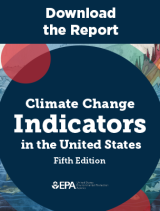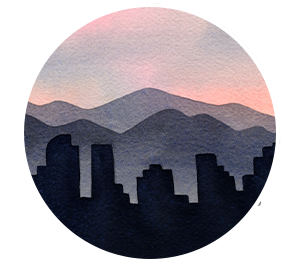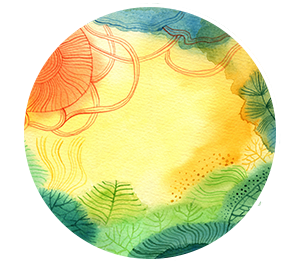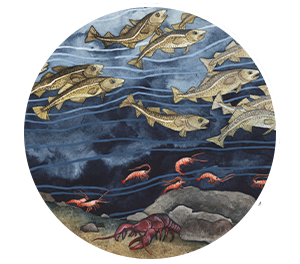Climate Change Indicators in the United States: Fifth Edition

The fifth edition of Climate Change Indicators in the United States documents how climate change is impacting the United States today, the significance of these changes, and their possible consequences for people, the environment, and society.
Using EPA's climate change indicators and relevant scientific literature, the report groups indicators into eight themes that help to show interconnections, cause-and-effect relationships, and how physical changes in the atmosphere affect people and the environment. Indicators related to human health and societal impacts of climate change cut across chapter themes and are integrated throughout the report. Each theme includes information on why the changes matter, as well as examples and discussion of the unequal impacts of climate change. The report also provides examples of what people and communities can do to address climate change, and what actions are already underway.
- Read the report (PDF)
- Read the technical documentation (PDF)
- Corrigenda (PDF)
- Recommended citation: U.S. Environmental Protection Agency. (2024). Climate change indicators in the United States (Fifth ed., EPA 430-R-24-003). www.epa.gov/climate-indicators
Themes Covered in the Report
|
|
Greenhouse Gases: As greenhouse gas emissions from human activities increase, they build up in the atmosphere and warm the climate, leading to many other changes around the world—in the atmosphere, on land, and in the oceans. The indicators presented in other chapters of this report and on EPA’s website illustrate many of these changes and their effects on people, society, and the environment. |
|
|
Heat on the Rise: As the concentrations of heat-trapping greenhouse gases in the atmosphere continue to increase, the United States has experienced warming temperatures, more unusually hot summer days, and more frequent heat waves that threaten people’s health and strain the electric power grid. |
|
|
Extreme Events: Rising global average temperature is associated with widespread changes in weather patterns. Extreme events such as heavy rainstorms, hurricanes, floods, droughts, and wildfires have happened throughout history, but human-induced climate change is expected to make these events more frequent and/or intense. While risks vary across the country, these events are among the nation’s costliest disasters, sometimes causing great damage to ecosystems, communities, and the economy. |
|
|
Water Resources at Risk: Clean fresh water is essential to life on the Earth, and climate change is affecting the planet’s water resources. As the climate warms, changing precipitation patterns, drought, decreasing amounts of snow, and earlier snowmelt all pose risks to water supplies in the United States, affecting communities, livelihoods, and ecosystems. |
|
|
Changing Seasons: Although the timing, duration, and intensity of the seasons vary naturally from year to year, climate change is driving longer-term changes in seasonality and fundamentally altering the ways in which humans and natural systems experience and interact with seasonal events. These changes lead to wide-ranging impacts such as warmer winters, lakes thawing earlier, longer growing seasons, and worsening allergies for people. |
|
|
Ocean Impacts: The heat-trapping greenhouse gases that humans have added to the atmosphere are making the Earth’s oceans warmer and more acidic. Changes in the oceans affect the Earth’s climate and weather patterns and threaten marine ecosystems and biodiversity and the people whose livelihoods depend on them. |
|
|
Rising Seas: As the temperature of the Earth changes, so does sea level throughout the world’s oceans. Water from melting ice sheets and glaciers on land ultimately flows into the ocean. Also, as water in the ocean warms, it expands slightly, increasing the volume of water in the ocean. Both of these factors contribute to sea level rise, which increases coastal flooding and other coastal risks. |
|
|
Alaska’s Warming Climate: The Arctic is warming more quickly than the rest of the world, as is Alaska—the northernmost U.S. state. Alaska is also uniquely vulnerable to climate change due to its frozen features. Alaska is the only state with widespread permafrost (underlying 80 percent of its land) and significant sea ice extent, which are an integral part of life. Entire ecosystems, communities, and Indigenous ways of life could vanish as these frozen features shrink or disappear. |








